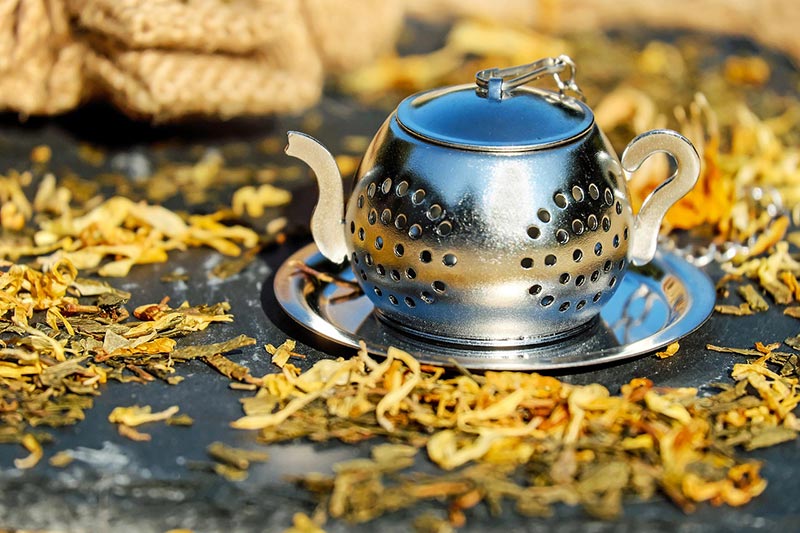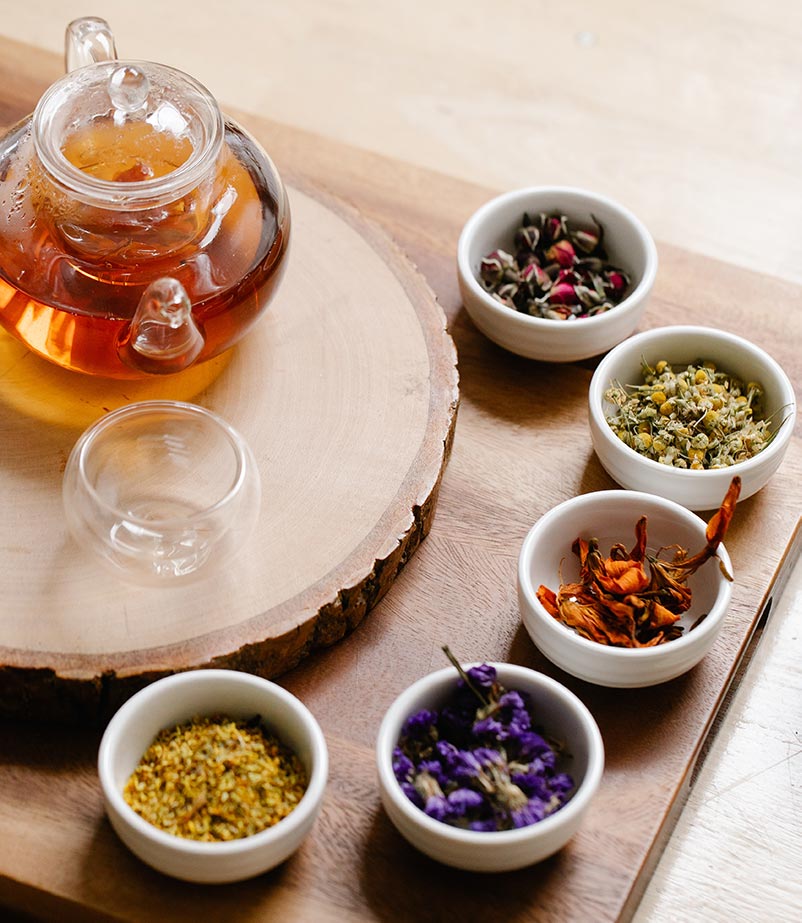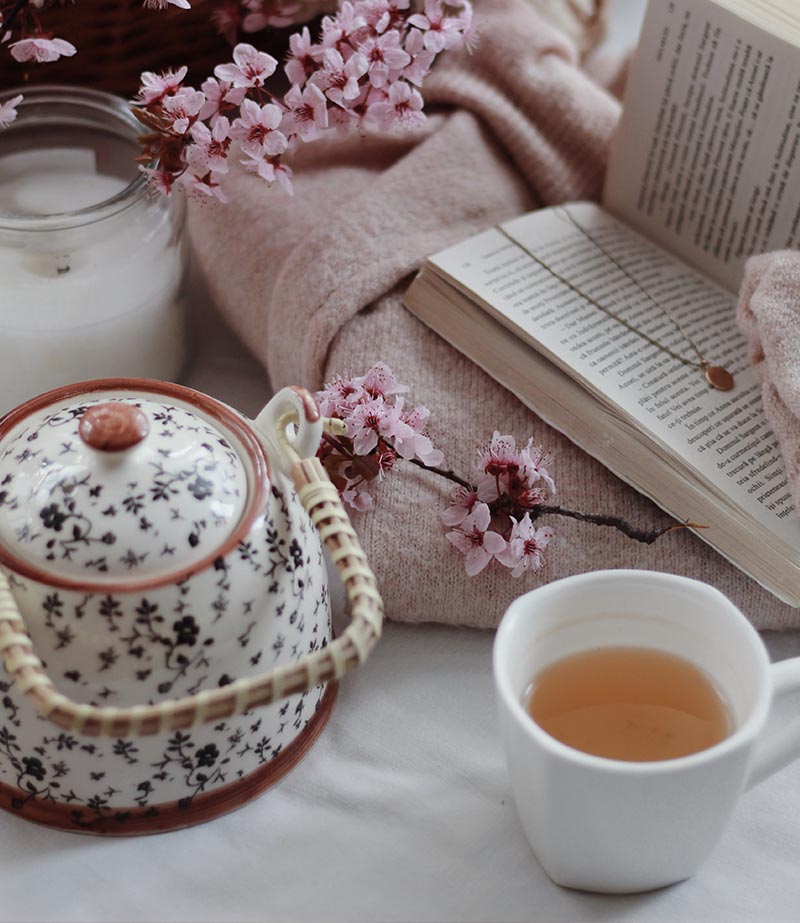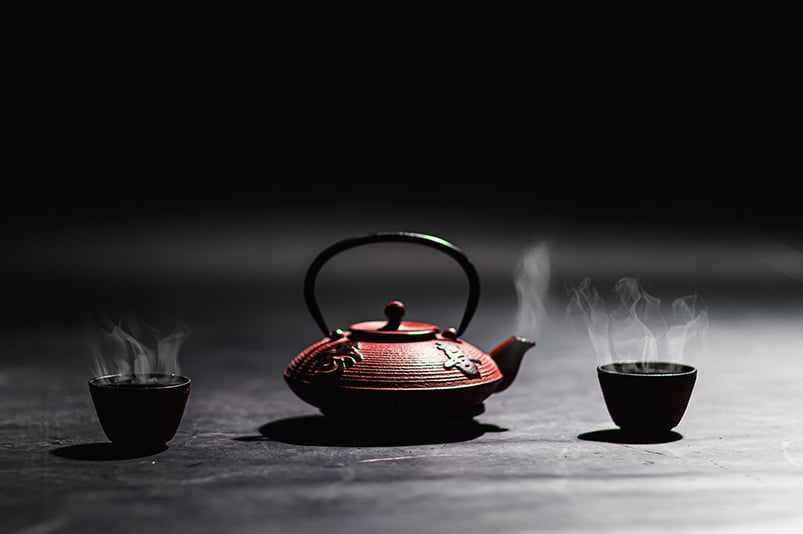Cleaning a teapot may seem straightforward, yet the process varies significantly based on the material from which it's crafted. Whether you've embraced the world of tea with great passion or are just taking your first steps into loose-leaf blends, it's crucial to grasp the proper method for effectively cleaning a teapot.
In this comprehensive guide, we will dive into how to properly clean teapots based on material to preserve the beauty, flavor, and longevity of your teapots that tea drinkers need to know.
How To Clean A Teapot Based On Material
Cleaning A Stainless Steel Teapot

Stainless steel teapot and tea kettle are the most common and can handle harsh cleansers. While you can argue whether ceramic or clay teapots should be cleaned, stainless steel and enamel-coated teapots absolutely should. There is no flavor benefit to the tannin build-up on those materials, and they are negatively affected by the minerals in hard water.
- After the brewed tea and you have enjoyed it, fill the teapot itself with warm water and add half a cup of white vinegar. You can also use lemon juice! The citric acid in the juice eats away at stains well. Give this mixture a good stir to combine, and allow it to sit in the pot for at least 20 minutes.
- Use a soft sponge or cloth to scrub the teapot's interior delicately. Avoid using abrasive materials that might cause surface scratches.
- Pour the white vinegar solution, and rinse the pot with warm tap water.
- Fill the teapot again with boiling hot water. Use a bottle brush to scrub the inside of the teapot's spout. Then, dump out the boiling water.
- The outside of a stainless steel teapot will likely become discolored over time. After you've cleaned the inside of your pot, clean the exterior using warm water, dish soap, and a scouring pad. Rinse off the soapy water and rub it dry using a microfiber cloth.
Cleaning A Glass Teapot

Cleaning a glass teapot requires careful handling to avoid damaging the delicate glass while effectively removing tea stains and residue.
- After each use, make sure to rinse the teapot with warm water to eliminate any leftover tea residue.
- Gently clean the teapot's interior and exterior using a soft sponge or cloth. Be cautious not to use abrasive materials that could potentially scratch the glass.
- For tough stains, you have the option to form a paste by combining baking soda and water. Spread this paste over the stained areas, softly scrub, and ensure thorough rinsing.
- Avoid drastic temperature changes, as glass can crack. Allow the teapot to cool down before cleaning it with cold water.
- If necessary, gentle dish soap can be used. Mix a small amount of dish soap with warm water and gently cleanse the teapot with a soft sponge or cloth. To eliminate any trace of soap, rinse the teapot thoroughly with clean water.
- If you notice limescale or mineral buildup, you can create a mixture of equal parts water and white vinegar. Pour the mixture into the teapot and allow it to soak for a few hours or overnight to dissolve the deposits. Afterward, thoroughly rinse the teapot with water to ensure no leftover vinegar residue.
Cleaning A Ceramic Or Porcelain Teapot

Cleaning a ceramic or porcelain teapot involves gentle care to preserve the delicate finish and prevent any damage.
- After each use, rinse the teapot with warm water to eliminate any loose tea leaves and residue.
- Gently clean the teapot's interior and exterior using a soft sponge or cloth. For tougher stains, employ a mild dish soap and a soft brush for scrubbing. Additionally, you can create a baking soda paste and delicately scrub it using a soft cloth or sponge.
- Refrain from using harsh abrasives that might harm the glaze or finish.
- If the teapot has a removable infuser or filter, be sure to clean it as well.
- Allow the teapot to air dry to prevent moisture from getting trapped.
- If you notice mineral deposits or limescale buildup, you can create a mixture of equal parts water and white vinegar. Pour the mixture into the teapot, allowing it to soak for several hours or overnight to dissolve the deposits. Then, thoroughly rinse the teapot with water to eliminate any residue.
Cleaning A Cast Iron Teapot

Cleaning a cast iron teapot requires special care to prevent rust and maintain its seasoning.
- After each use, rinse the teapot with warm water and avoid using soap, as it can remove the teapot's seasoning.
- Use a soft cloth or sponge to clean the inside of the teapot. Do not scrub aggressively, as cast iron can be sensitive to scratching.
- To remove any lingering flavors, you can occasionally boil water in the teapot with a teaspoon of loose tea leaves and then discard the water.
- Dry the teapot thoroughly with a towel to prevent rusting. Place the teapot in a well-ventilated area to continue air drying.
- Cast iron teapots develop a natural seasoning over time, enhancing the tea's flavor. To maintain this seasoning, occasionally rub a very thin layer of oil or cast iron conditioner on the teapot's inside. Before storing the teapot, remove any surplus oil by using a paper towel to wipe it clean.
- If there are stubborn stains or residue, you can create a paste by mixing a small amount of coarse salt with water. Spread this paste over the stained areas and delicately rub using a soft cloth or sponge. The salt helps to remove stains without harming the teapot's surface. Ensure that the teapot is thoroughly rinsed with warm water to eliminate any traces of salt residue.
Tips For Managing Stains
Certain types of teas, like black tea, pu-erh tea, green tea, oolong tea, and chai, are more likely to cause stains due to their pigments, tannins, and other compounds. Over time, these stains can build up, particularly if the teapot isn't cleaned adequately after each use.
Removing stains from teapots requires a combination of gentle cleaning techniques and sometimes natural cleaning agents. The method you choose will vary based on the material of your teapot and the type of stains you're dealing with. If you're looking to clean your teapot and get it back looking like new, you can try a few extra tips.
Baking Soda
Create a baking soda solution by dissolving four tablespoons of baking soda into four cups of boiling water. Pour this solution into your teapot and let it sit for at least 1 hour. Scrub the solution into the stains using a non-abrasive scrubbing pad, then rinse the pot out with water and let it air dry.
White Vinegar + Lemon Juice
Both white vinegar and the citric acid found in lemon juice work well for mineral deposits. Soak a paper towel with one or the other, and set it directly on the stains. Alternatively, you can transfer the solution into a spray bottle and then apply it to the stain. Allow the soaked towel to sit for at least 45 minutes, then use a scrubbing pad to rub away the loosened deposits. Cleanse the teapot using warm water and dishwashing liquid, then rinse and dry it.
Salt
Salt can be used as a gentle abrasive to help remove stains. Mix salt and water, then spread a paste over the stained areas. Delicately scrub using a soft cloth or sponge and a thorough rinse.
Cornstarch Paste
Use cornstarch and water to make a paste for the stained areas. Allow it to dry, then gently scrub and rinse with water.
Olive Oil
Olive oil can effectively remove certain types of stains, particularly on ceramic and porcelain teapots. Put a small quantity of olive oil on a soft cloth and gently rub the stained areas. Wipe off the excess oil and rinse with warm water.
FAQs
Can I Just Put My Teapot In The Dishwasher?
Prior to placing anything in the dishwasher, it's essential to consult the manufacturer's instructions to confirm whether the item is suitable for dishwasher use. Dishwashers are incredibly abrasive and can harm many types of surfaces.
Traditional teapots made out of clay, ceramic, and other porous surfaces are not likely to be dishwasher-safe.
If your teapot is marked as safe to use in a dishwasher, simply place it upside-down in the appliance and run it as usual. Keep in mind, however, that the dishwasher will clean the teapot but won't likely remove any stains created by the tea leaves over time.
How Often Should You Clean The Teapot?
The frequency of cleaning your teapot depends on several factors, including the type of tea you brew, the material of your teapot, and your personal preferences. Regardless of the type of tea or material, it's advisable to rinse your teapot with warm water after every use. This helps remove loose tea leaves and prevent residues from drying and sticking to the teapot's surface.
If you use your teapot daily, it is recommended that you clean it thoroughly once a day. Use mild dish soap and a soft sponge to clean the teapot's inside and outside. This routine prevents residues from accumulating over time.
Teas with strong pigments or flavors, like black tea and herbal teas, might require more frequent cleaning. Cleaning every two to three days can help prevent stains from setting in.
How Often Should You Clean Teapot Stains?
It's a good practice to address teapot stains regularly to prevent them from becoming deeply ingrained. Regular cleaning can help maintain the appearance of your teapot and prevent stains from becoming more difficult to remove. If you notice fresh tea stains after brewing, addressing them promptly is a good idea. Depending on your teapot's material and the intensity of the stains, you might need to clean them after every few uses.
